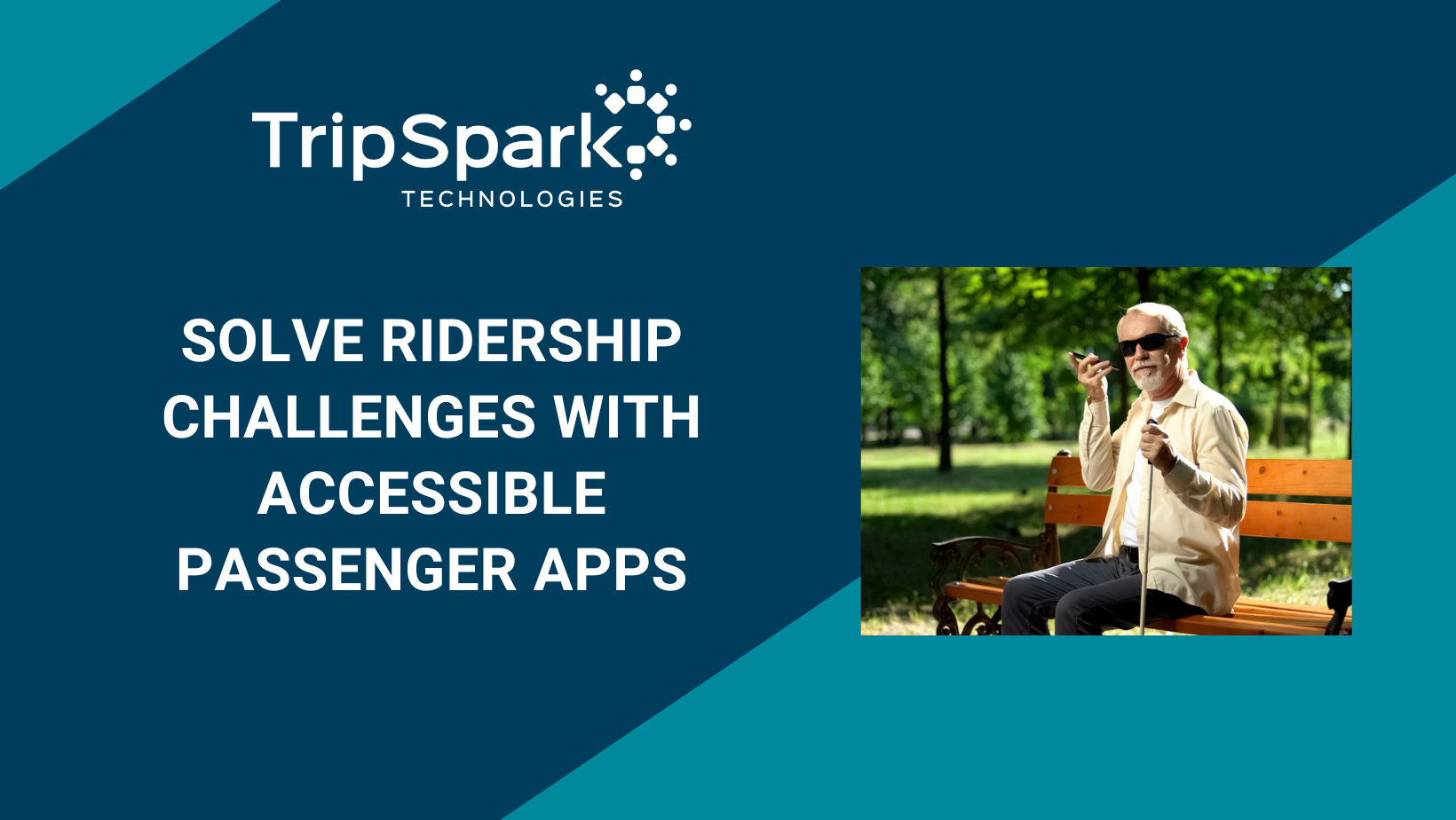Solve Ridership Challenges with Accessible Passenger Apps

Transit agencies face an uphill battle retaining riders when in perpetual competition with cars. That’s why agencies need to demonstrate the value of services beyond basic transportation. The key? Creating an experience that makes riders feel valued, understood, and empowered.
The Customer Experience Factor
In public transit, rider experience is the difference between hesitant users and loyal riders. When riders can easily plan trips, navigate the transit system, and know their bus will arrive on time, they are more likely to choose transit as their primary transportation choice.
However, for some people in the community, public transit isn’t just one option – it’s a lifeline. Riders with disabilities count on accessible transit to stay independent, access community amenities, reach jobs and educational opportunities.
Making Transit Work for Everyone
Whether a website portal or a mobility app, modern passenger information systems transform how riders interact with public transit. These systems provide riders with simple to use interfaces, tools for planning or booking a trip, and accurate real-time updates and vehicle locations.
How passenger information systems break the barriers to transit for riders with disabilities is accessibility features that make service information easy to access. Passenger information systems with accessibility as a core value also have web and mobile interfaces that work with screen readers and text-to-speech converters to make service information easier to understand by riders with disabilities.
Accessibility features help riders with disabilities find the service information they need to confidently use transit and get to where they need to go. Agencies can transform hesitant riders who might otherwise transition away from public transit into regular users.
The result? Increased ridership, improved customer satisfaction, and stronger community support for riders who need transit the most and want to maintain their independence.
The Business Case for Accessible Passenger Information
For transit agencies, investing in an accessible passenger information system yields benefits that goes beyond serving riders with disabilities. By prioritizing accessibility, agencies create a user-friendly experience that respects the unique needs of riders, and that’s what attracts and retains riders across all demographics.
Ready to see how accessibility features can transform your ridership numbers? Talk to TripSpark and let’s have a conversation about passenger apps for equitable, accessible, and inclusive transit.

